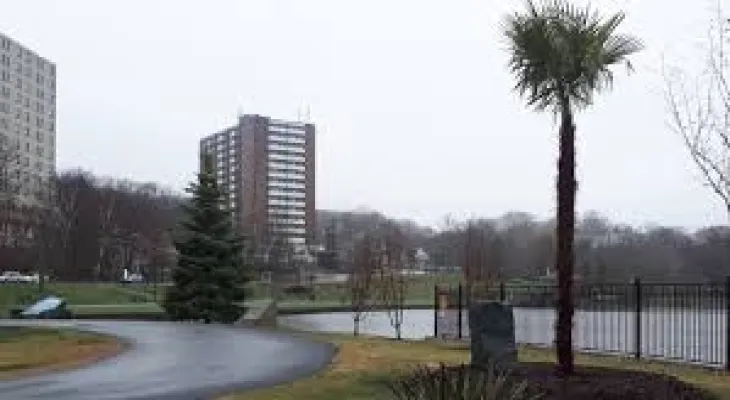Search here
Newspaper
Search here

Arab Canada News
News

Published: June 9, 2024
It seems, perhaps as expected, that palm trees cannot survive in Nova Scotia.
In 2018, the Halifax Regional Municipality tried planting seven palm trees throughout Dartmouth, a community of less than 100,000 people located on the eastern shore of Halifax Harbour.
The trees, usually associated with sandy beaches and coconuts, stood out in the landscape, piquing the curiosity of local residents.
Municipal spokesperson Ryan Nehring stated that the goal of the project was to find out if the tropical trees could adapt to the coastal climate of the province, known for the extreme weather fluctuations partly caused by the Atlantic Ocean.
After six years, it has become clear that they cannot.
Nehring joked, "Unfortunately, the winter in Nova Scotia was a bit too cold for them."
The initial cost of the trees was $4,000, and the varieties were chosen because they are known to be more tolerant of cold.
The two towering windmill palms would become the most famous and respected, after being placed in the well-known municipal spaces of Sullivan's Pond and Shubie Park.
Nehring said five smaller varieties – including the Bundoo and needle palms – were declared dead after the 2021-2022 winter.
One of the windmill palms also did not survive that same winter, and thus it was replaced. Its death was announced this spring.
The last windmill palm died after the 2022-2023 winter and was replaced last spring, but it too could not withstand Halifax's harsh weather.
Nearby, staff had taken special care of the palm trees during the winter, insulating their trunks and wrapping them in wooden boxes in an attempt to protect them from the constantly harsh and fluctuating weather elements in the province, but to no avail.
Nehring said, "They really did a great job monitoring these trees and checking on them regularly throughout the winter and exploring different ways to save them."
"It was definitely an interesting project."
Lord Abbie, an associate professor of horticulture at Dalhousie University in Truro, New South Wales, said he was not surprised at all by the outcome.
Describing the project as bold, Abbie said, "It’s not easy to introduce tropical plants into Nova Scotia; I’ve tried."
Abbie noted that cold-hardy palm trees, like the windmill palm, can only withstand temperatures slightly below 10 degrees Celsius.
Hardiness zones are a standard used by gardeners to determine which perennial plants are likely to thrive in a given location, taking into account its unique climatic conditions.
Abbie stated that palm trees can generally live in zones seven to eleven. The hardiness zone for Halifax is six.
He mentioned that the area's sudden weather patterns do not help in growing palm trees.
He added, "We have snowstorms. We have heatwaves and severe winds. It rains all summer and the winter is extremely snowy."
"So, keeping all this in mind with these ocean-driven fluctuations... it can severely impact any crop including windmill palms which are typically a tropical plant."
Sam Austin, representing the Dartmouth Centre, said the project also has another purpose: to allow those who may not be able to travel south the opportunity to enjoy a palm tree.
Austin said, "There’s a long tradition in the gardening world of showcasing exotic species that people don’t necessarily have the chance to go see for themselves," noting that there are many foreign species displayed in Halifax's public gardens.
"Experiencing that in Dartmouth was just part of that space to try to provide something different for people here and spread a little joy. And I think during the time we had them, they achieved that mission."
There are no immediate plans to plant more palm trees. They have now all been replaced with more hardy plants or shrubs or trees.
However, Nehring has not completely ruled out the return of the tall feather-like fronded trees.
Nehring said, "I know that quite a few people were interested in seeing the progress and results of this experiment. "We’ll see maybe in the future we’ll try something similar."
Comments